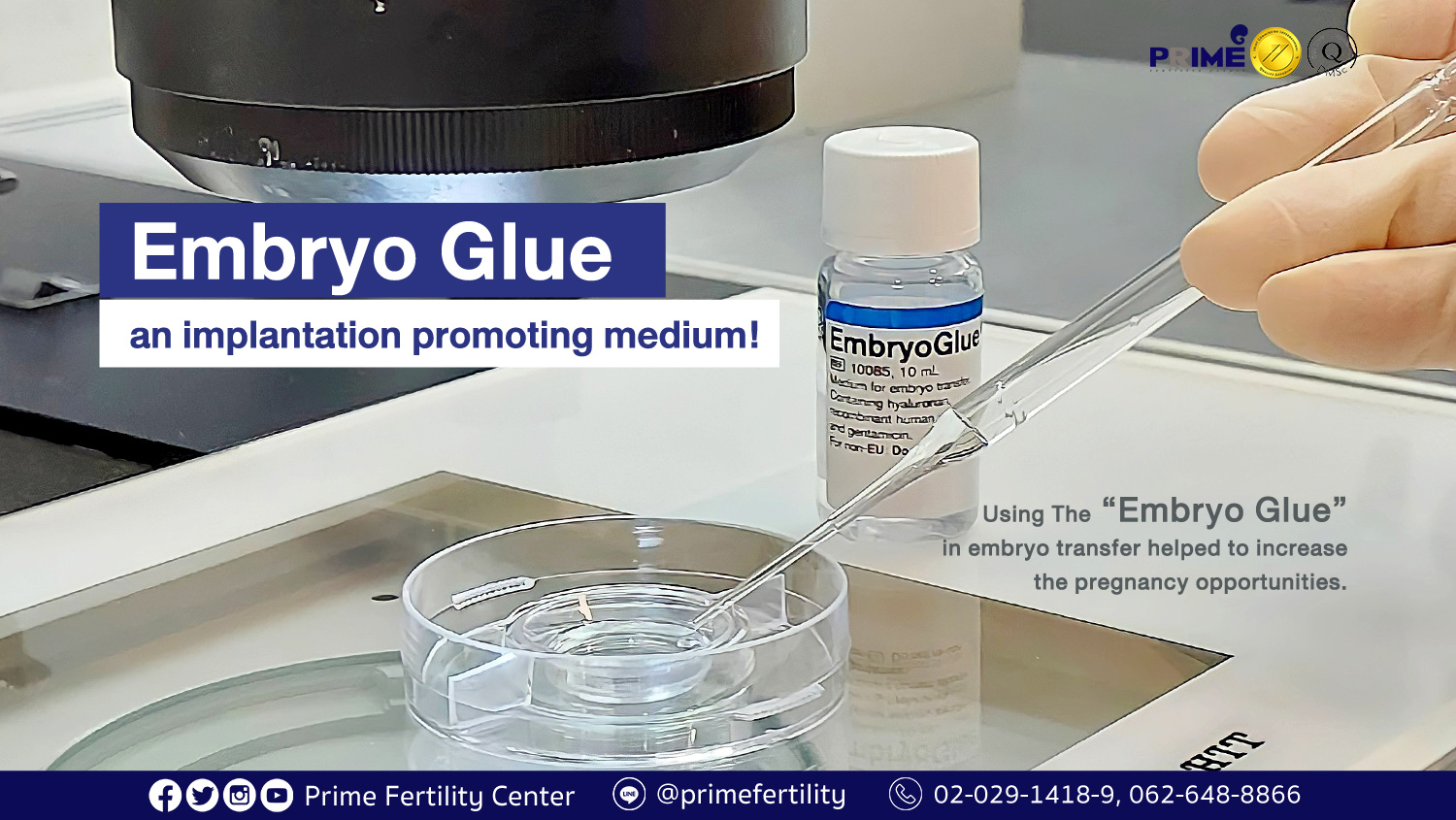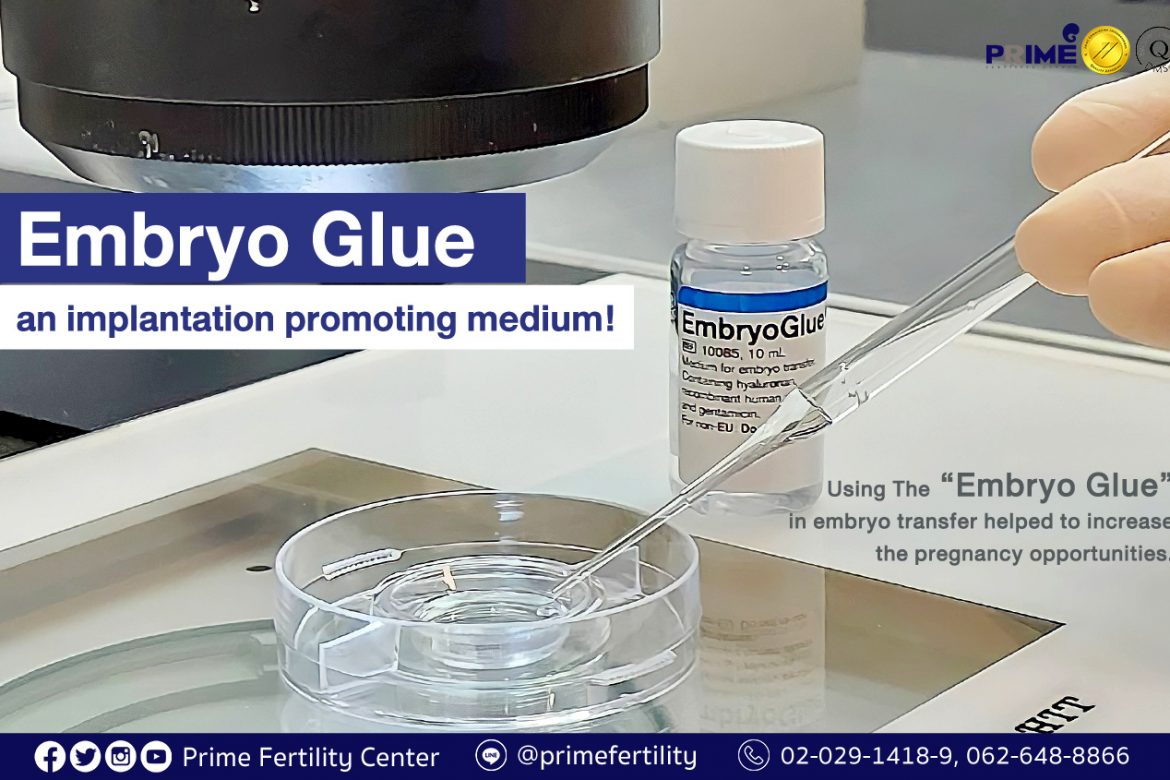Embryo glue is a solution containing hyaluronan protein that occurs naturally in human body and plenty of it is found in the endometrium during embryo implantation period.

The hyaluronan protein will adhere to a receptor called CD44 that is found on the surface of endometrium.
Embryo glue works by coating an embryo in order to facilitate the embryo to move through the uterine secretion layer on the surface epithelium. When the embryo approaches endometrial epithelium, the hyaluronan substance will adhere to CD44 (a cell surface adhesion receptor that plays a role in cell-to-cell interactions between embryo cells and endometrial cells). After that, the embryo will embed in the endometrial cells.
Studies found that using the embryo glue in embryo transfer helped to increase the pregnancy opportunities. The result showed the use of transfer medium embryo glue increased the overall pregnancy and implantation rates to be at 38.6% compared with 30.3% of pregnancy and implantation rates resulting from the transfers without embryo glue.
Therefore, using the embryo glue in embryo transfer can increase pregnancy and implantation rates for both fresh and frozen cycle as well as either blastocyst transfer or cleavage-stage transfer. However, there is no difference in miscarriage rates between the transfers using and without using the embryo glue.
Reference: Prime Fertility Center Co., Ltd.




